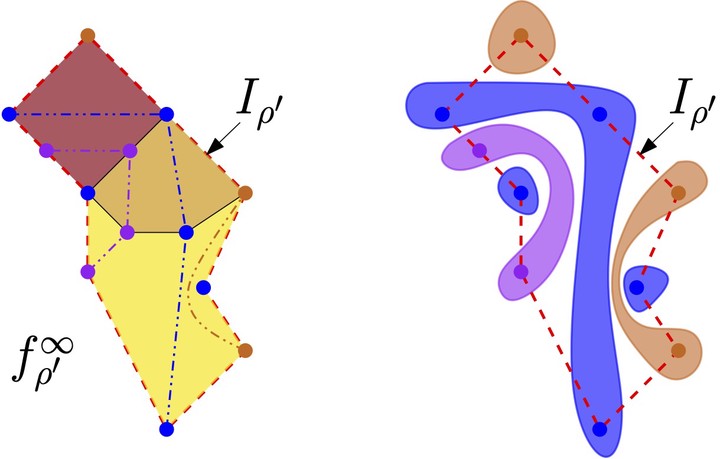C-Planarity Testing of Embedded Clustered Graphs with Bounded Dual Carving-Width
 A planar saturation (left) and the corresponding admissible partition (right)
A planar saturation (left) and the corresponding admissible partition (right)
Abstract
For a clustered graph, i.e, a graph whose vertex set is recursively partitioned into clusters, the C-Planarity Testing problem asks whether it is possible to find a planar embedding of the graph and a representation of each cluster as a region homeomorphic to a closed disk such that 1. the subgraph induced by each cluster is drawn in the interior of the corresponding disk, 2. each edge intersects any disk at most once, and 3. the nesting between clusters is reflected by the representation, i.e., child clusters are properly contained in their parent cluster. The computational complexity of this problem, whose study has been central to the theory of graph visualization since its introduction in 1995 Feng, Cohen, and Eades, Planarity for clustered graphs, ESA’95, is still unknown even when the graph has a prescribed planar embedding, i.e, for embedded clustered graphs. We show that the C-Planarity Testing problem admits a single-exponential single-parameter FPT algorithm for embedded clustered graphs, when parameterized by the carving-width of the dual graph of the input. This is the first FPT algorithm for this long-standing open problem with respect to a single notable graph-width parameter. To strengthen the relevance of this result, we show that the C-Planarity Testing problem essentially retains its computational complexity when parameterized by several other graph-width parameters.
